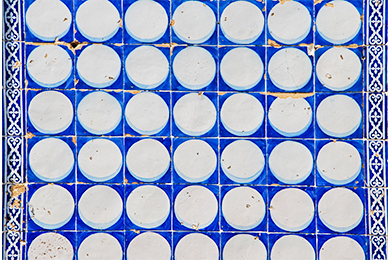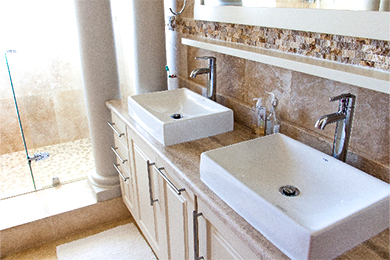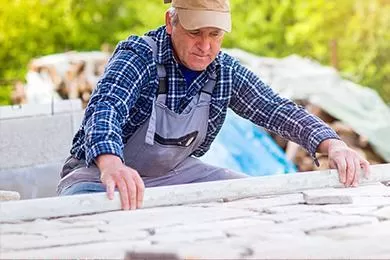TILE INSTALLATION
Professional Tile Installation in Chelmsford, MA
When it comes to adding style and value to your home, few upgrades match the timeless appeal of expertly installed tile. At My Dear Watson Handyman, we specialize in high-quality tile installation services for homeowners in Chelmsford, MA and surrounding areas.
From kitchen backsplashes to bathroom walls and entryway floors, our skilled team delivers precision work with stunning results. We install a wide range of tile materials including:
Ceramic and Porcelain Tiles
Subway Tiles for Backsplashes
Mosaic Accent Tiles
Floor Tiles for Kitchens, Bathrooms, and Basements
Shower Wall and Tub Surround Tiles
Grout Sealing and Re-Grouting Services
We’ll work with your design preferences and tile selection to make sure everything lines up beautifully—literally and figuratively. Whether you’re remodeling a bathroom or upgrading your kitchen, our attention to detail and craftsmanship makes all the difference.
Let My Dear Watson Handyman bring your tile vision to life. We’re fast, clean, affordable, and local—based right here in Chelmsford, MA.
How to Install a Ceramic Tile Floor

ceramic tile
Ceramic tile floors are a perfect option for those who desire a seamless look and feel, without the high cost. Learn how to install them here! In addition to the factors listed above, there are a few other things to consider before deciding on ceramic tile flooring. The first is that these floors are very heavy and you’ll definitely need help lifting them into place. Not only do they weigh more than your average vinyl or laminate flooring, but they can also be quite fragile if not handled correctly. Also, don’t forget that unlike typical laminate or vinyl floors, which can simply be laid down on top of an existing floor and then sealed with a sealer, ceramic tiles require special preparation before installation. You will have to drill holes in the subfloor before laying the tiles down and seal each individual tile as it goes down.

How do you install tile in a bathroom?
Tile can be used in your bathroom to create a beautiful look. However, if you are not familiar with how to install tile in a bathroom, you may want to hire an experienced contractor for this job.
- What’s the best way to install tile in a bathroom? Tile is one of the most popular flooring options for many homeowners. The only problem with tile is that it can be difficult to install. If you are ready to start installing your first set of tiles, here are some tips and tricks that will make the process much easier.
- What kind of tile should I use for my floor? I have tile all over my house, but I want to ditch the wood and vinyl flooring. What kind of tile should I use?
Any type of tile will work for your hardwood floors if it’s scrub-resistant and can be sealed. Tile is easy to clean, looks great and offers a variety of styles that are suitable for any home or commercial space. Concrete tiles are ideal for bathrooms because they don’t absorb moisture like porcelain or ceramic, which helps keep the bathroom dry during heavy showering or bathing. Ceramic tiles are best used in kitchens where moisture doesn’t need to be contained as much since they resist stains better than natural stone. Natural stone tiles look great on patios and decks, while their durability makes them perfect for walkways and driveways as well.
- What tools do you need to install tile in a bathroom? If you are installing tile in a bathroom, you will need to have the following tools:
Screwdriver or drill with a ¾ inch bit.
Plastic putty knife or sponge. You can also use a small plastic scraper to clean up grout lines that come off. We usually scrape it up with our finger and then wipe it off. It is easier than trying to scrape it out with the putty knife or scraper first! The putty knife has sharp edges which may leave scratches on your wall if not careful!
Cutting mat for cutting tiles and grouting them correctly so they look nice and uniform (if possible)
-> Before: You’re working on a tile floor in your bathroom. You have no idea how to install it, and you’re worried that you’ll mess it up. You’re a little nervous that you may need to order more tile just so you can have enough tiles to complete this project.
-> Now: You’ve installed your floor. It looks great, and it’s easy to maintain with the right products on hand. You’ll use this same product again in other areas of your home, and you’ll be able to help others install their floors as well.
What are the different kinds of tile?

- What’s the difference between marble, granite and slate? Marble is quarried from the earth, granite and slate are mined. Marble is made of limestone or travertine that has been crushed and heated to about 1,000 degrees Fahrenheit (540 degrees Celsius). The crushed stone is then mixed with a binding agent such as cement to create marble slabs or tiles. Granite and slate are also quarried from an ore called schist that is formed when sedimentary rock layers are folded over on themselves. The schist ore is then ground into thin sheets in order to create granite and slate tiles.
- What’s the difference between porcelain and ceramic tile? Porcelain and ceramic tile contain very little in the way of clay—meaning that it’s not a traditional material for use on its own. Instead, porcelain tiles are made from a cement-based mixture called “porcelain-enamel,” which is then fired at high temperatures (around 1,200 degrees Fahrenheit) to create something resembling hard stone. Ceramic tiles are made from natural materials such as clay or concrete and then handcrafted into whatever pattern you want before being fired again at much lower temperatures to lock the design permanently into place.
- How do I care for porcelain tile? Most porcelain tiles have an enamel finish that can be cleaned with warm water and mild soap, but if you’re using any type of grout or sealer in between your cleanings, follow the manufacturer’s directions first! Porcelains will also scratch easily if they’re dropped onto a hard surface like marble or granite so make sure to keep them out of these surfaces.
- What are the various types of tile used for floors and walls? Tiles have been used for centuries to create floors and walls. Tile is a type of flooring material that has been traditionally made in an array of colors, patterns, textures and shapes. The most popular types of tile include natural stone tiles, ceramic tiles, porcelain tiles and vinyl floor tiles.
- What’s the difference between natural stone, ceramic, and porcelain tile? Stone tiles and natural stone are two different things. Stone tile is a term that refers to the material used in flooring, either as an actual stone or a type of masonry material such as tile brick. Natural stone is one of several types of stones, including marble, granite, travertine, limestone and slate. Natural stone tiles can be made from these materials alone or with other materials like cement, glass fiber and/or ceramic clay; this combination gives the tile its final texture within the raw material (quartz).
- Porcelain Floor Tile. Porcelain floor tiles are an inexpensive alternative to marble or granite. These tiles are made from a mixture of clay and quartz that is heated to more than 1,000 degrees Fahrenheit. This process creates the characteristic color and texture of porcelain tile.
What's the difference between ceramic tiles and porcelain tiles?
- Ceramic tile is made from clay and porcelain tile is made from china clay (ceramic). The difference between the two is that ceramic tiles are more porous and porcelain tiles are more durable. Ceramic tiles will absorb odors over time, while porcelain tile will not absorb odors at all. In addition to their aesthetic appeal, porcelain tile has an added benefit: it’s stain resistant! No matter how hard water gets on your ceramic tiling, it won’t fade or dull over time as compared with other types of flooring materials.
- Ceramic tiles are made from a durable clay material that’s resistant to stains and damage. Porcelain tiles are made from natural quartz deposits, giving them a smooth surface that is easy to clean with soap and water.
- Ceramic tiles are a great option for kitchens because they’re easy to clean and resist stains. Porcelain tiles, on the other hand, offer a more elegant look.
- What are the benefits of installing tile in my bathroom? Installing tile in your bathroom is a great way to update the look of your home. The tiles are durable, easy to clean and can be installed in just a few hours. They also make the room look more organized, which helps you feel comfortable when you’re there for long periods of time.
- If you’re looking for a tile option that’s both beautiful and functional, consider installing ceramic tile in your bathroom.
- My Dear Watson Handyman Services Bathroom Tiles have everything you need to install beautiful bathroom tiles at the lowest prices anywhere!
How to Lay Tile: DIY Floor Tile Installation
- Tile installation and removal .
Call us today to make an appointment!
- Tile installation problems . As long as the tile is laid flat on the floor and not “frozen” in place with a backing board, they can be removed without damage. However, if the tiles are laid too close together or are not laid properly, they will break when you remove them.
Foundation Problems: Foundation problems may include cracked foundation walls, sagging floors due to inadequate support of the floor joists, or settling foundation walls that have been compromised by water intrusion.
The good news is that these problems can usually be repaired to bring your home back into good condition! If you choose one of our licensed contractors for your project, we will make sure it’s done right and at a reasonable price so you won’t end up paying more than necessary for repairs
- Is tile installation hard? Tile installation is a very simple process that does not require any special tools. First, you need to measure the area where you want the tile to go and mark it out with chalk or tape. Then, use a level to make sure that the area is straight. Next, lay down drop cloths on top of your floor so that they are protected from getting dirty while you work.
- Is tile installation dusty? Tile installation is not as dusty or dirty as many people think. The dust that comes from the tiling process is basically a mix of cement powder and real dirt, so it’s very fine. It doesn’t pose any health risks to humans or pets, and it won’t damage car interiors either.
- Tile installation specifications: A tile installation specifications is a set of instructions that people use to describe and measure the design of hard surface such as tiles. The instructions ensure that people using the tiles will get exactly what they want. Even though it may take extra time, one should follow these specifications in order to get a high-quality result.
- Factors To Consider When Hiring Professional Services Of Tile Installation. Tile installation is a process that requires great care to ensure the tiles are installed properly. Proper preparation and planning can help you avoid any potential problems when hiring tile professionals for your project.
About Tile Installation
- Spread and Comb the Mortar for the Tile Membrane Mix the unmodified thinset.
- Use a utility knife to cut around any pipes.
- How to Install Tile Floors Step 1: Cut the Tile Membrane to Size Lay out your membrane with the fleece side down, and mark the subfloor at the edges of the membrane so you know where to spread the thinset.
Preparing to Install Floor Tile
- Tile is like a puzzle. It has to be put together in the right order and with the proper pieces for it to work properly.
- Preparing to install floor tile is like building a home. You start by selecting the right kind of floor and then decide on how many tiles will be needed.
Installing Floor Tile
- Tile is a durable material made of small pieces of ceramic, stone, or glass.
- Tile installation is a process of placing ceramic tiles on a floor.
- Protect adjoining rooms, make sure you have good ventilation and wear the correct safety gear such as eye protection and a safety mask.
- Removing existing tile can get dusty.
- If you’re removing an old tile floor, then you need to chisel out the old tile and use a floor scraper to remove old mortar.
- In addition to removing any existing flooring and installing the tile, it takes time for the thinset mortar to set and for the grout to dry, so you won’t be able to immediately walk on the floor.
- A tile floor installation will take a few days to complete.
- A shower wall tile or bathtub tile install is different from tiling a floor, so even if you’ve completed one of those projects, review the steps for this type of tile installation before you tile a floor.
How To Ensure That You Get Quality Tile Installation
Tile installation should be done by a professional
Why Is Hiring Professionals for Tile Installation Beneficial?
- Hiring professionals for tile installation is like hiring a plumber to install new faucets in your home. The plumber will need to do some research and then come up with a plan as to how he or she will be able to complete the job.
- Professionals are like surgeons. They know what they’re doing and how to do it right.
- A professional tile installer is like a painter. Many painters have their own specialties, and they have knowledge of how to apply paint in different ways.

Tile Installation
Installing tile is a great way to update the look of your home without having to do extensive renovations. It can be tricky, though, to get the job done right.
Tile Installation Services – Frequently Asked Questions
Q: What areas of the home do you install tile in?
A: We install tile in bathrooms, kitchens, entryways, laundry rooms, backsplashes, and more. If you have a tiled space in mind, we can make it happen.
Q: Do you remove old tile before installing new tile?
A: Yes. We offer tile removal and surface prep as part of our complete installation services, ensuring the new tile adheres properly and lasts.
Q: How long does a tile project usually take?
A: Most residential tile installations take 1–3 days, depending on the size of the area and complexity of the layout. We’ll give you a clear timeline before we start.
Q: Can I provide my own tile materials?
A: Absolutely. You can either supply your own tile or we can help you select high-quality options that fit your space and budget.
Q: Do you offer grout repair or re-caulking for existing tiles?
A: Yes! We also offer grout cleaning, re-grouting, and caulking services to refresh old tile without a full replacement.
BOOK WITH US TODAY, WE WILL FIX IT!
Let's INSTALL YOUR DREAM TILES!
Tile installation is not a new concept, but it has become more popular in recent years. The trend of using tiles rather than the traditional flooring has been on the rise because they are more durable and easier to maintain.
The first step in installing your dream tile is to make sure that you have all the tools and materials that you need. For example, you will need a tile saw, hammer, screwdriver, level, grout, spacers, and adhesive. The next step is to measure your space so that you can buy enough tile for your project. You will also need to mark the area where the tiles should be placed with a pencil or chalk line and then start cutting them into individual pieces with the tile saw. Once this process is completed you can start laying down your tiles one. Or you can call us at 978-455-5661, we will take care of everything.
